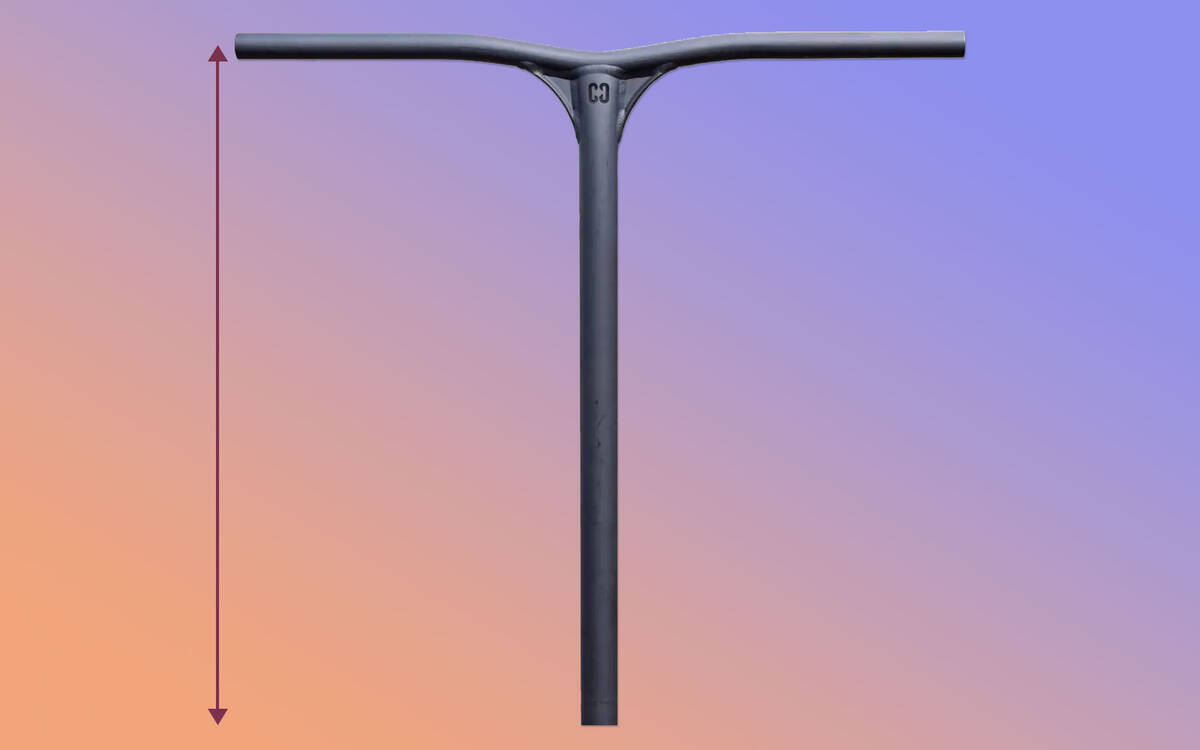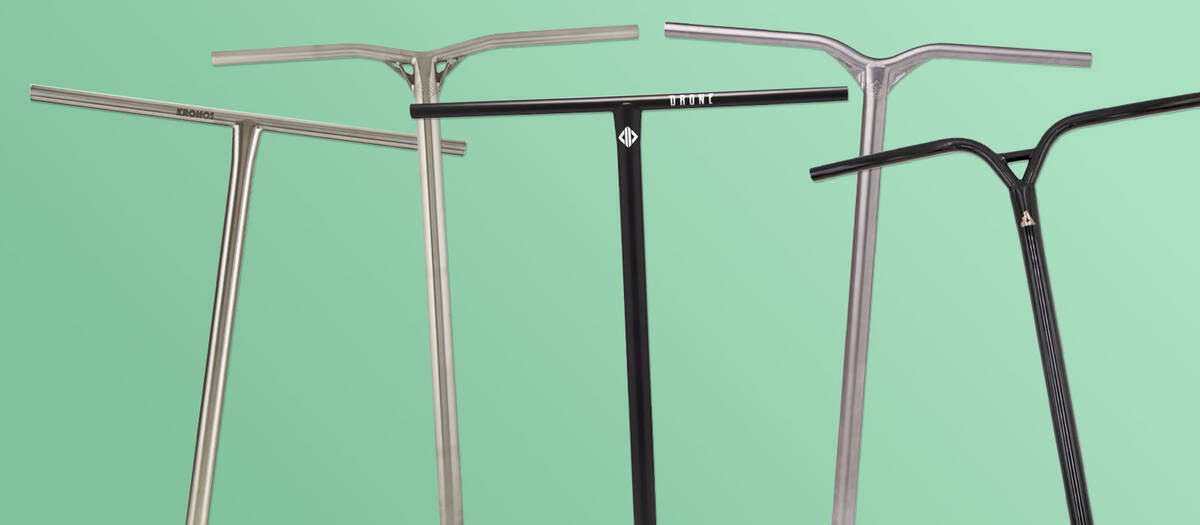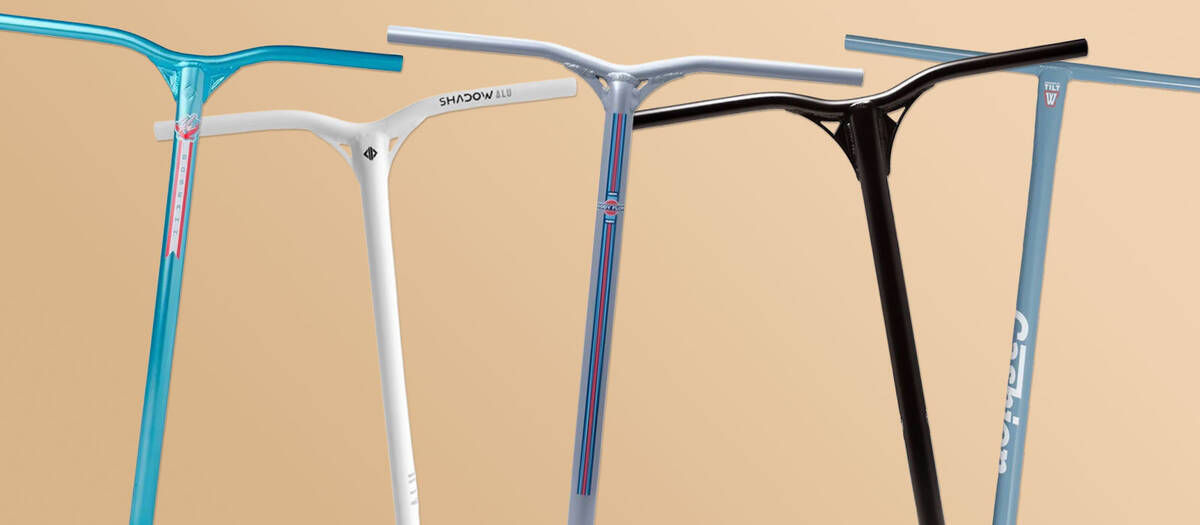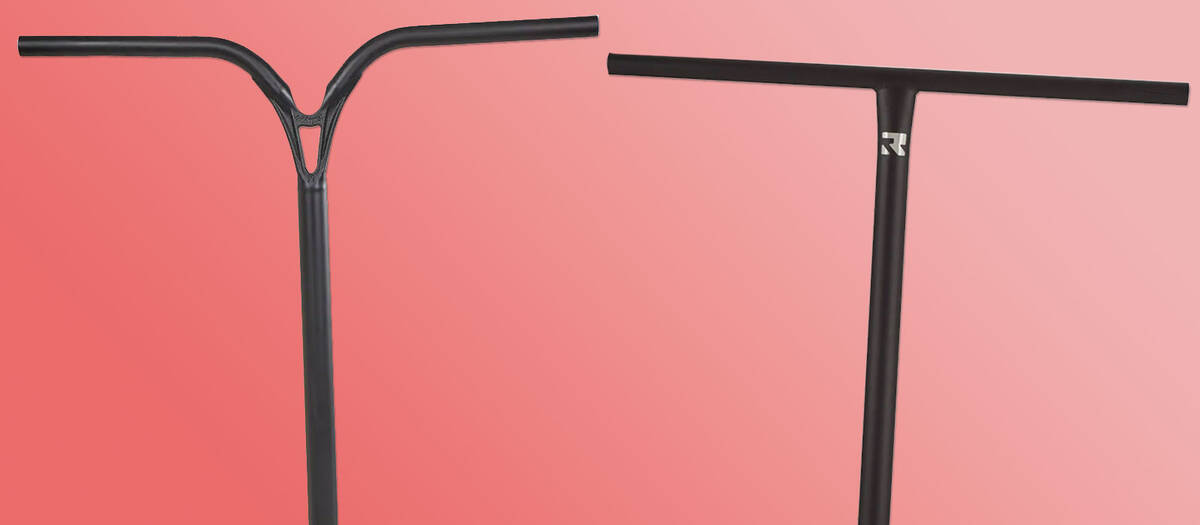Guide to Buying Stunt Scooter Bars
This guide provides an in-depth look at purchasing stunt scooter bars. We aim to assist you in navigating through the variety of choices, making it simpler for you to select the ideal bar for your scooter.
We address any queries you may have prior to buying a new stunt scooter bar. Important aspects like bar height, compatibility, and material will be explained. Prepare to enhance your scooter with the finest bar on the market!
Overview
Overview
Determining the Correct Scooter Bar Height

The height of a stunt scooter bar is crucial in picking the right bar. It significantly influences your riding style and comfort, so careful attention to selecting the appropriate height is advised.
Bar height is largely a personal choice. For those new to riding and yet to establish their preferences, certain guidelines can simplify selecting the correct height.
How high should your scooter bars be? Ideally, they should reach between your hips and navel when standing on flat ground with the scooter deck underfoot. This provides comfort and the best leverage for executing tricks. At this height, you can maintain an upright posture while having ample leverage. For beginners uncertain between two heights within the recommended range, opting for the taller bar generally provides better command.
When deciding whether to go for a taller or shorter bar, or if uncertain about different versions of a same-height bar, this table may help.
| Aspect | Taller Bars | Shorter Bars |
|---|---|---|
| Comfort | Less strain on the back due to the more upright position | Encourages forward bending, possibly increasing back strain |
| Tricks | Improved control over grinds and manuals | Enhanced ability to throw the scooter around mid-air |
| Stability | Sturdier | More agile and quick to respond |
| Style | Typically suited for street | Typically suited for park |
Method for Measuring Scooter Bar Height
Scooter bars are marketed with their height in the product details. However, this number does not precisely indicate how tall the scooter will be once the bar is installed.
To accurately measure the height of your full scooter with the bar added, measure from the bottom of the front wheel up to the bottom point where the scooter bar will fit upon mounting. This position is influenced by your scooter's compression system.
Steps to measure total scooter height:
- SCS: Measure from the base of the front wheel to the middle of the clamp. Include this in the bar height to calculate the total height.
- HIC/IHC/ICS: Measure from the base of the front wheel up to the bottom of the clamp. Add this measure to the bar height to determine the comprehensive scooter height after installing the new bar.
If additional information is required, we are ready to assist. Here are some useful links:
Choosing the Correct Width for Your Scooter Bar

When deciding on the width of your scooter bar, it should align with the width of your own shoulders. Measure across from one shoulder to the other and add one or two inches. This ensures the width is comfortable. Bars that are too narrow can look awkward and cause wrist and shoulder discomfort. Conversely, overly wide bars might impede some tricks and be uncomfortable due to an excessively wide grip.
If you are pondering between a narrower or wider scooter bar, consider these aspects:
- Wider bars: Offer better stability and are easier to grab
- Narrower bars: Are more nimble and simpler to spin
Scooter Bar Diameter: Choosing Between Oversized and Standard Bars

Scooter bars come in two diameter types: standard or oversized:
- Standard: 32 mm outer diameter / 28 mm inner diameter
- Mix: 35 mm outer diameter / 28 mm inner diameter (mostly aluminium bars)
- Oversized: 35 mm outer diameter / 32 mm inner diameter
Key differences between standard and oversized bars are primarily in weight and strength. Oversized bars tend to be stronger and heavier than their standard counterparts, which are typically lighter but less robust.
Aluminium bars demand extra material to attain sufficient strength for heavy riding. Consequently, the majority of aluminium bars on the market have a 35 mm outer diameter and a standard inner diameter of 28 mm.
Ensuring Compatibility of Scooter Bars
When choosing a new scooter bar, it is vital to confirm it will fit the rest of your configuration. You can check this by examining the bar’s specifications to see what compression system it supports.
- For an SCS setup, the bar should not have a slit - An SCS adapter can be used to eliminate a slit
- If using a standard size SCS clamp, ensure your bar has a standard outer diameter
- For an oversized SCS clamp wanting a standard size SCS bar, make sure to have an appropriate SCS clamp shim
Below is a table showing the criteria a bar must satisfy to work with SCS, HIC, or IHC compression systems. Follow the table across each row to trace your current compression system, check for compatibility with different bar sizes, and see any extra prerequisites, like the need for a slit.
Standard Bars32 mm outer diameter 28 mm inner diameter |
Oversized Bars35 mm outer diameter 32 mm inner diameter |
MIX (Majority of Aluminium Bars)35 mm outer diameter 28 mm inner diameter |
|
|---|---|---|---|
| SCS Compression
|
Compatible if:
|
Compatible if:
|
Compatible if:
|
| HIC Compression
|
NOT COMPATIBLE |
Compatible if:
|
NOT COMPATIBLE |
| IHC Compression
|
Compatible if:
|
NOT COMPATIBLE |
Compatible if:
|
If using an SCS setup and you prefer a bar with a slit, you can purchase an SCS Sleeve (or SCS Bar Adapter) from our Scooter Compression section, but many HIC or IHC bars already include an SCS adapter. Check them here:
We have numerous guides discussing stunt scooter compression and the compatibility of various components. Find solutions to your queries in these resources:
Titanium Bars for Scooters

KaTo join the excitement of experienced scooter enthusiasts, titanium bars are acclaimed for their lightweight characteristics akin to aluminium and their robust strength comparable to steel. The exceptional weight-to-strength ratio is the main reason scooterists consider titanium bars, offering assurance during intense sessions without compromising performance due to their light weight.
Despite their higher cost compared to chromoly or aluminium, the exceptional properties of titanium bars necessitate more resources, reflected in the price. Riders trying titanium bars for the first time often notice their flexibility, which, while initially challenging, can become a benefit as it absorbs impact upon landings, adding to ride comfort.
Titanium bars are uniquely different from steel or aluminium, as they snap when breaking after extensive use, rather than slowly weakening or bending. It's vital to replace the bar if signs of wear are detected, which typically appear after sustained use.
Advantages:
- Sturdy
- Light in weight
- Offers flexibility
Disadvantages:
- Costly
- The flexibility might not appeal to everyone
- Risk of snapping when they do give out.
To explore our range of titanium bars, filter by material:
Aluminium Scooter Bars

Aluminium stunt scooter bars are celebrated for their low weight, enticing those who value agility and manoeuvrability. The lightweight nature is particularly helpful for performing air tricks and manoeuvres. Furthermore, they are often more affordable, suiting those in need of cost-effective trick-capable bars.
A downside is their limited robustness, making them more prone to distortion or breakage than steel or titanium bars. To counteract this, they often incorporate strengthening elements like gussets at junctions, enhancing their structure.
Advantages:
- Low weight
- Economical
Disadvantages:
- Less robust
- Lacks flexibility
Check our aluminium bar selection by filtering the material category:
Chromoly Scooter Bars

Steel stunt scooter bars, better known as chromoly bars, are highly regarded for their exceptional strength and cost-effectiveness. They do, however, weigh more than bars crafted from other materials.
In contrast to aluminium bars, which frequently incorporate gussets or Y-shapes for enhanced strength, chromoly bars can be produced in authentic T-shapes due to their material's natural robustness.
Steel bars are frequently employed in street setups, even by professional stunt scooter riders. Not all riders are focused on ultra-lightweight configurations, so whether you're new to scootering or an experienced pro, chromoly stunt scooter bars are a dependable choice!
To lighten their weight, some chromoly scooter bars feature butted tubing. This involves certain sections of the bars having thinner tubing to decrease weight while retaining durability. Chromoly bars are ideal for novices, and you can find a chromoly bar that suits any compression system.
Advantages:
- Durable
- Strong
- Affordable
- T-shape
Disadvantages:
- Heavy
Visit our assortment of scooter bars and sort by material to explore all our chromoly stunt scooter bars:
Y-Bars or T-Bars for Stunt Scooters?

T-bars and Y-bars are named after their unique shapes. The choice between them is largely a matter of individual preference, as neither is inherently better than the other.
T-bars are generally viewed as somewhat weaker because they lack the gussets or braces that strengthen the junction between the handlebars and the down tube. For this reason, T-shaped bars are often made from steel or titanium.
In contrast, Y-bars include reinforcements that offer a slight boost in strength. Consequently, aluminium bars are frequently crafted in a Y-shape.
The choice between T-bars or Y-bars is shaped by various factors, including style preferences, personal comfort during use, and identifying with a particular scootering aesthetic. In the end, each type has its unique benefits and caters to varying rider tastes.
Backsweep & Upsweep
Backsweep pertains to the handlebar angle towards the rider, while upsweep describes the upward bar angle. These features considerably influence scooter ergonomics, offering a more comfortable and natural wrist position.
Backsweep and upsweep are usually associated with Y-shaped bars, whereas T-shaped stunt scooter bars are characterised by simplicity and a straightforward design.
Explore all our stylish Y- and T-shaped bars:
